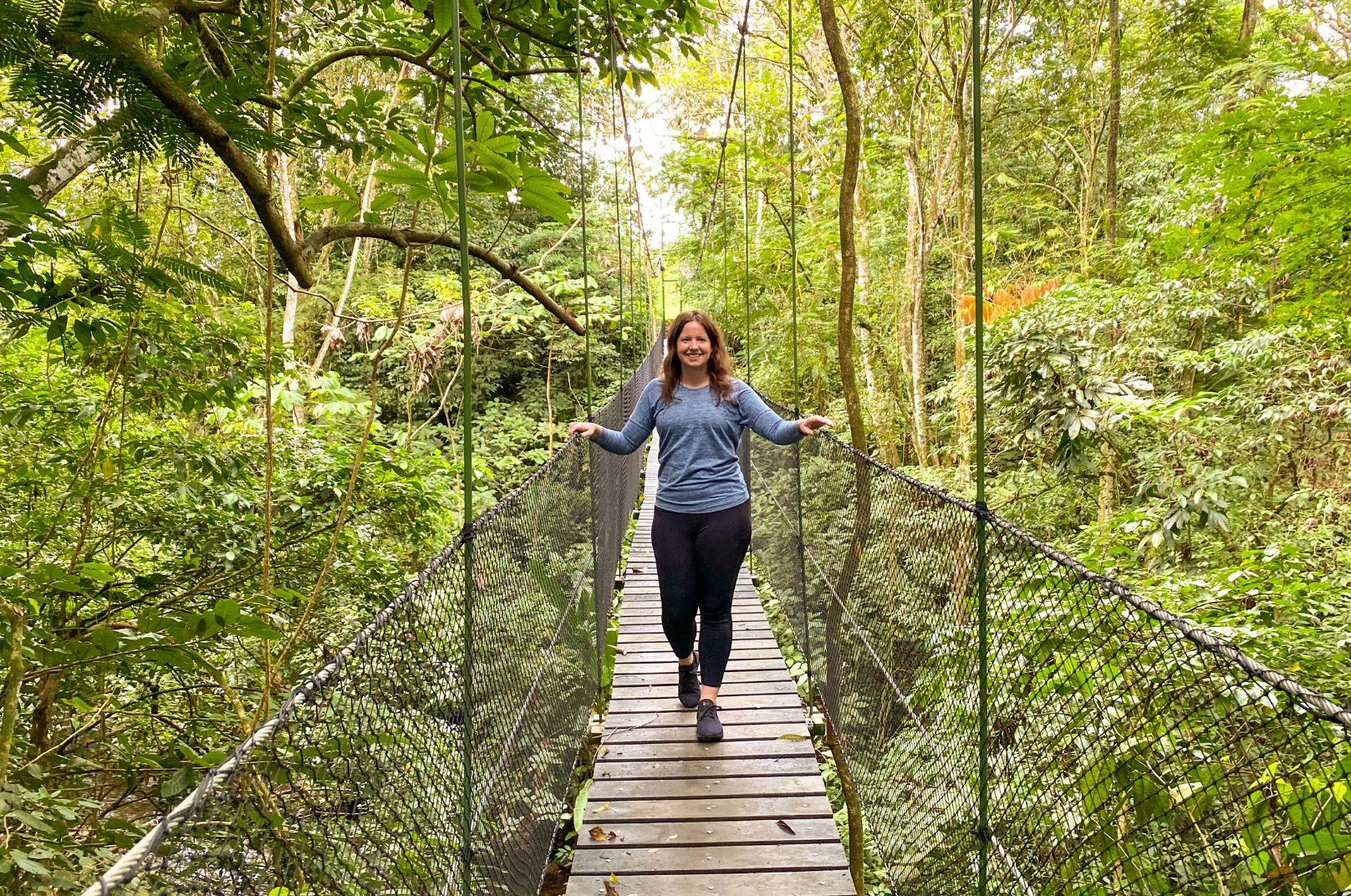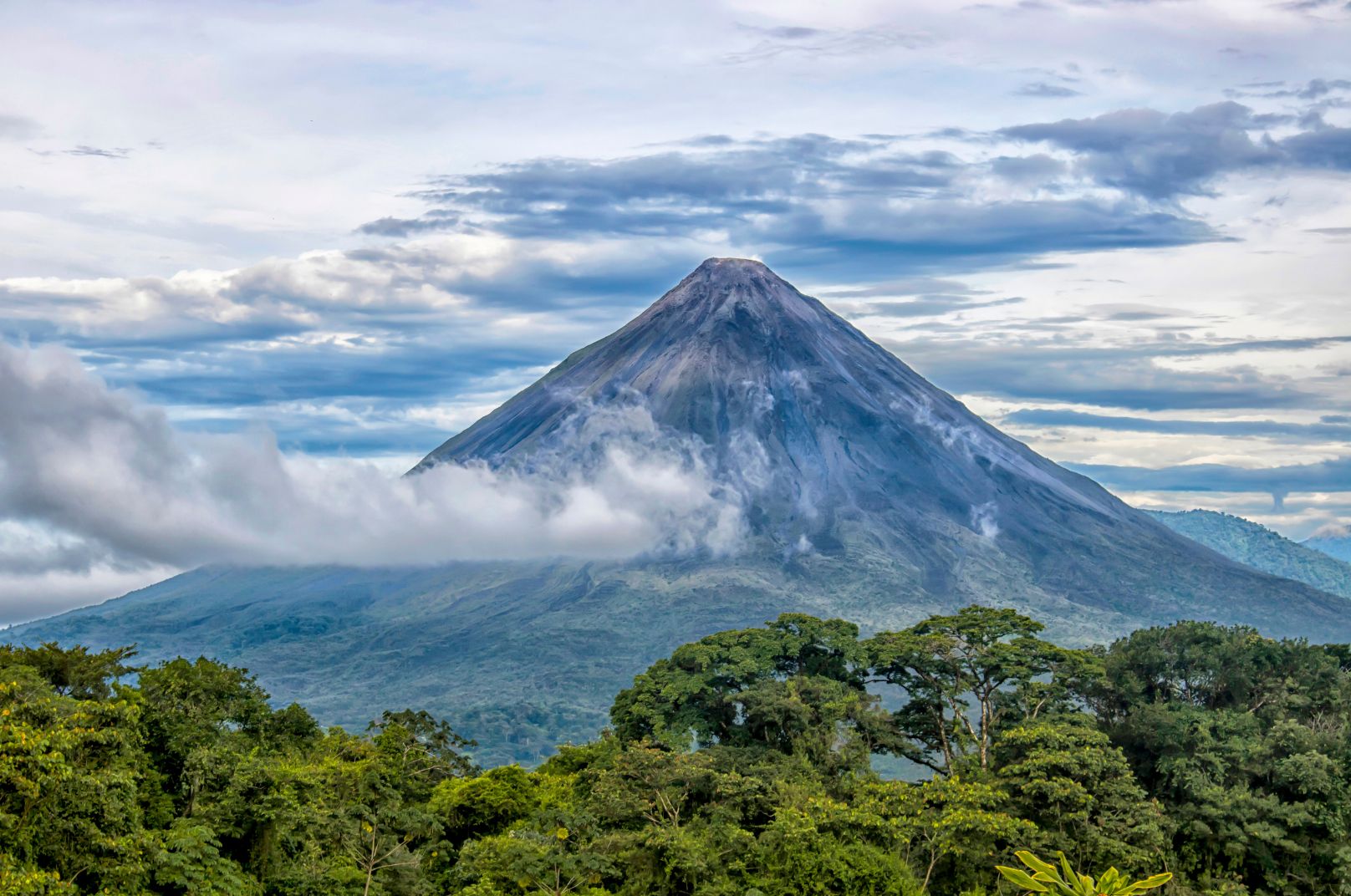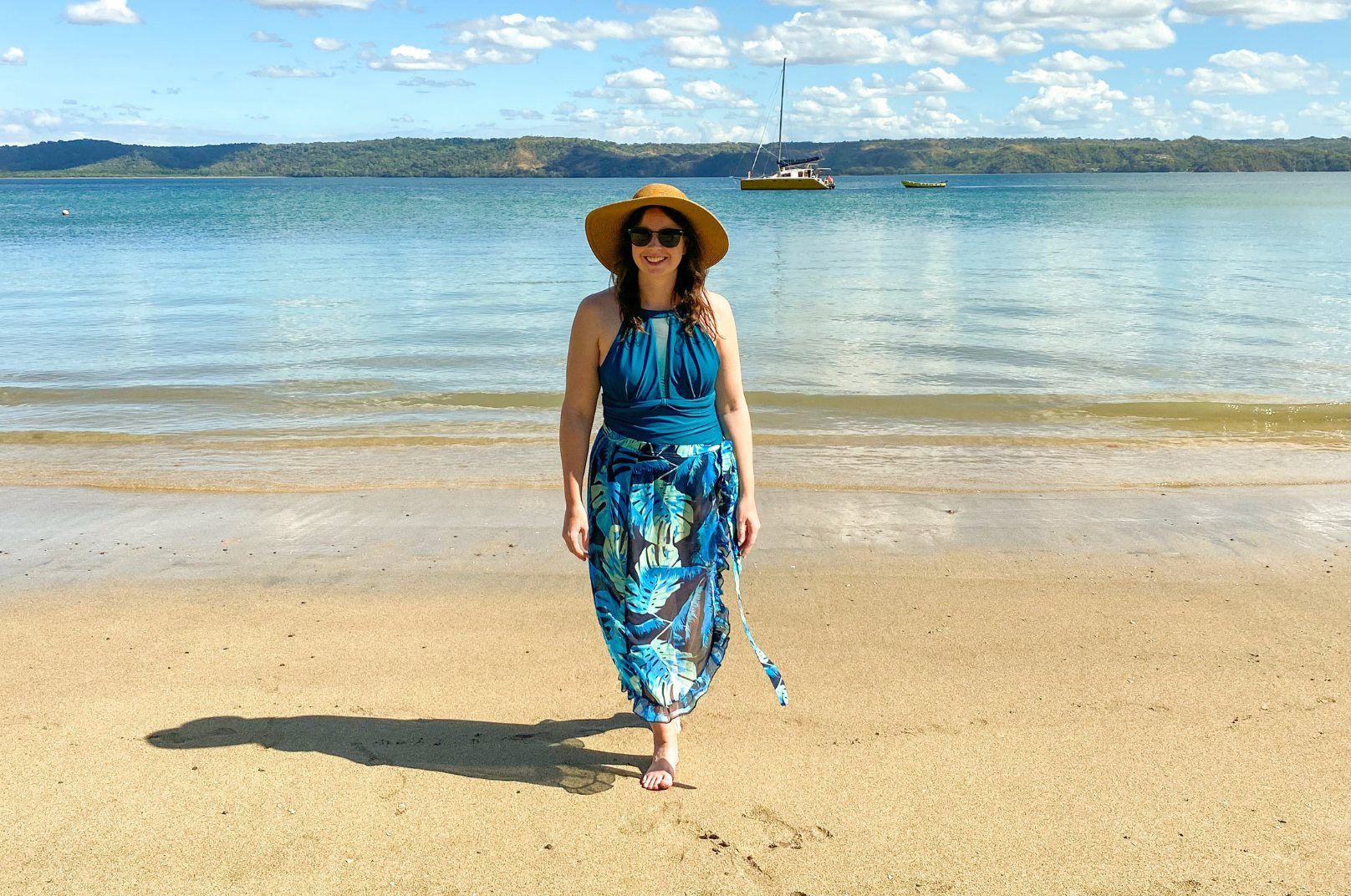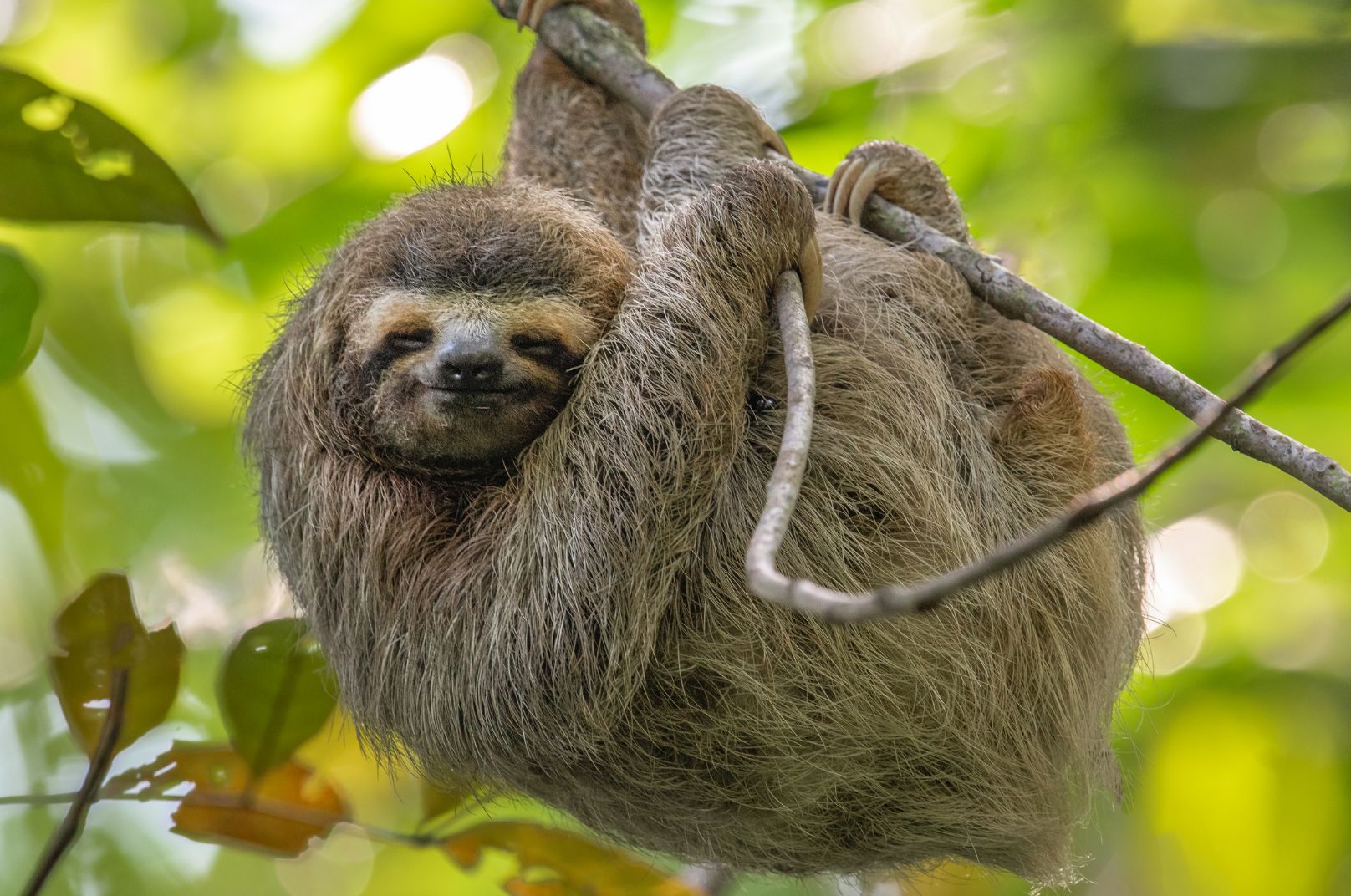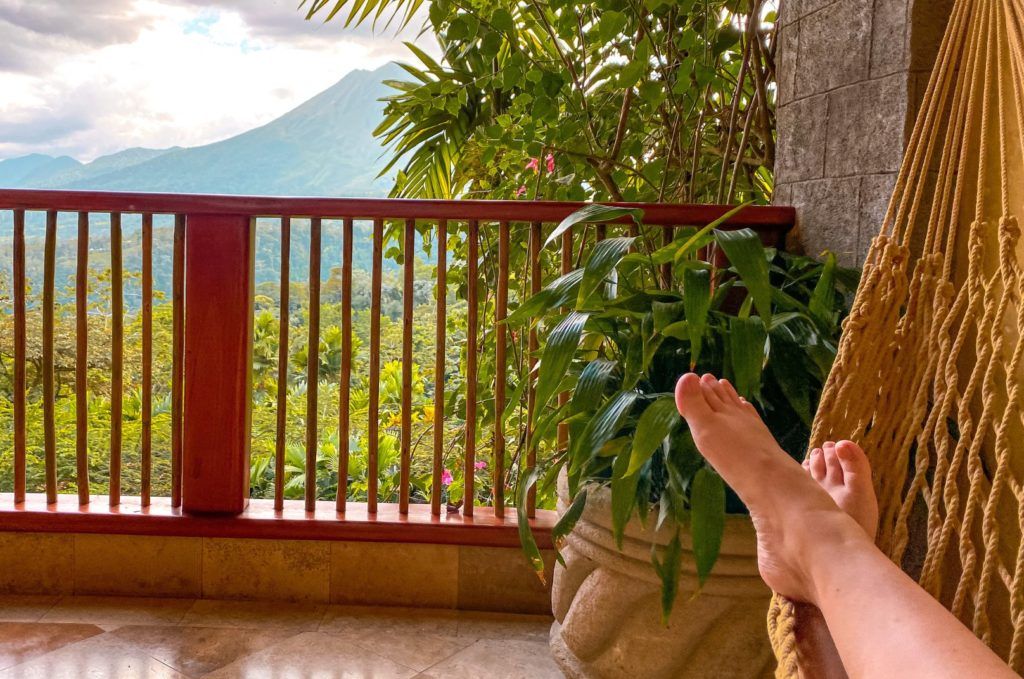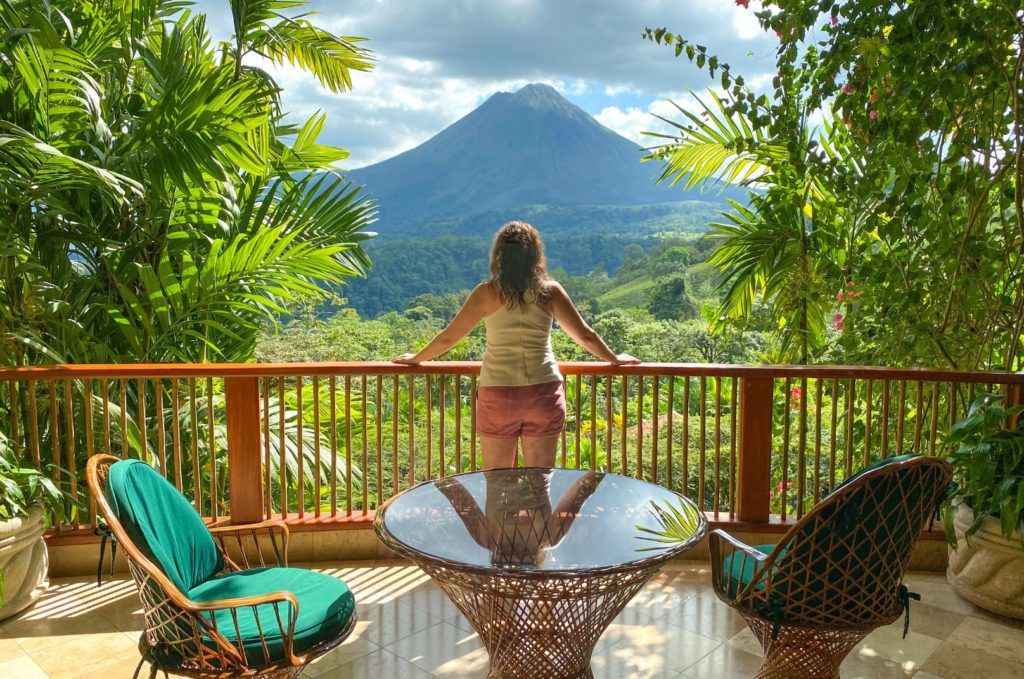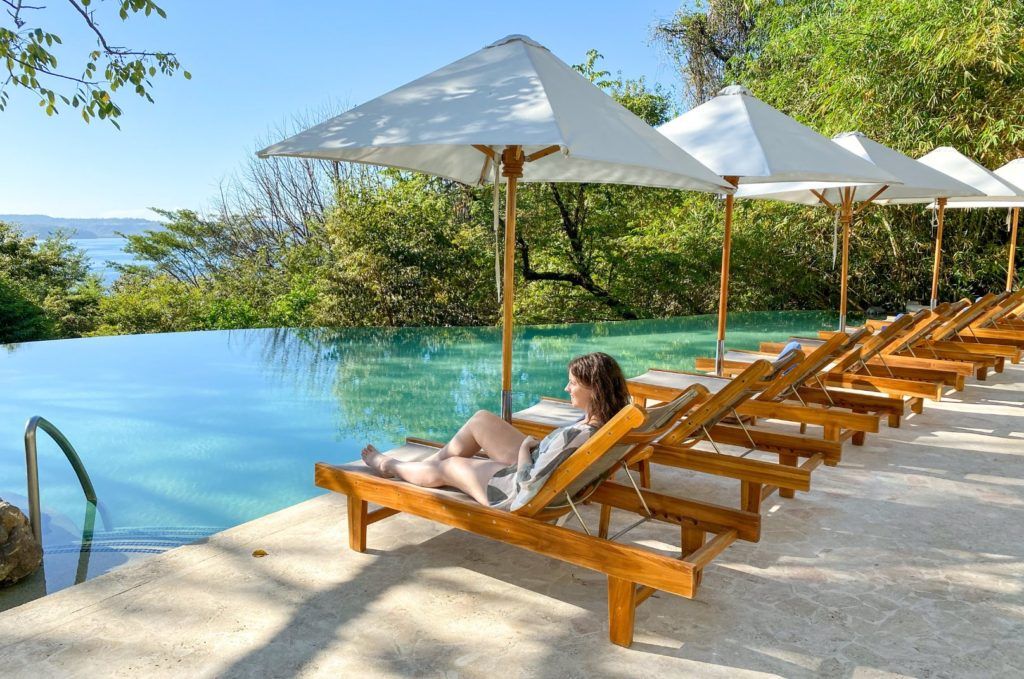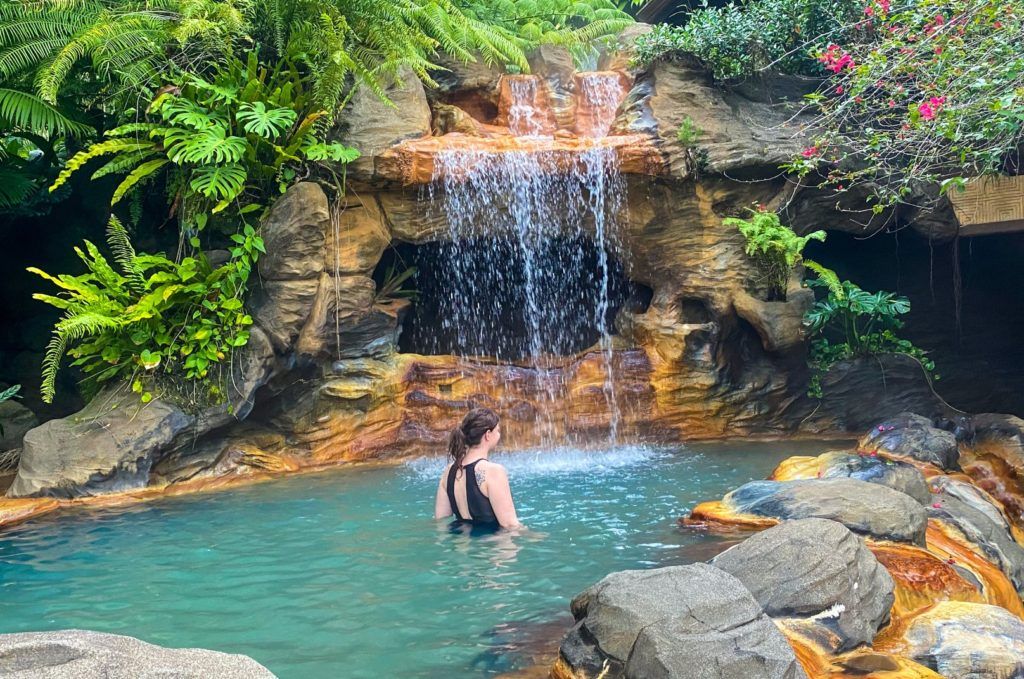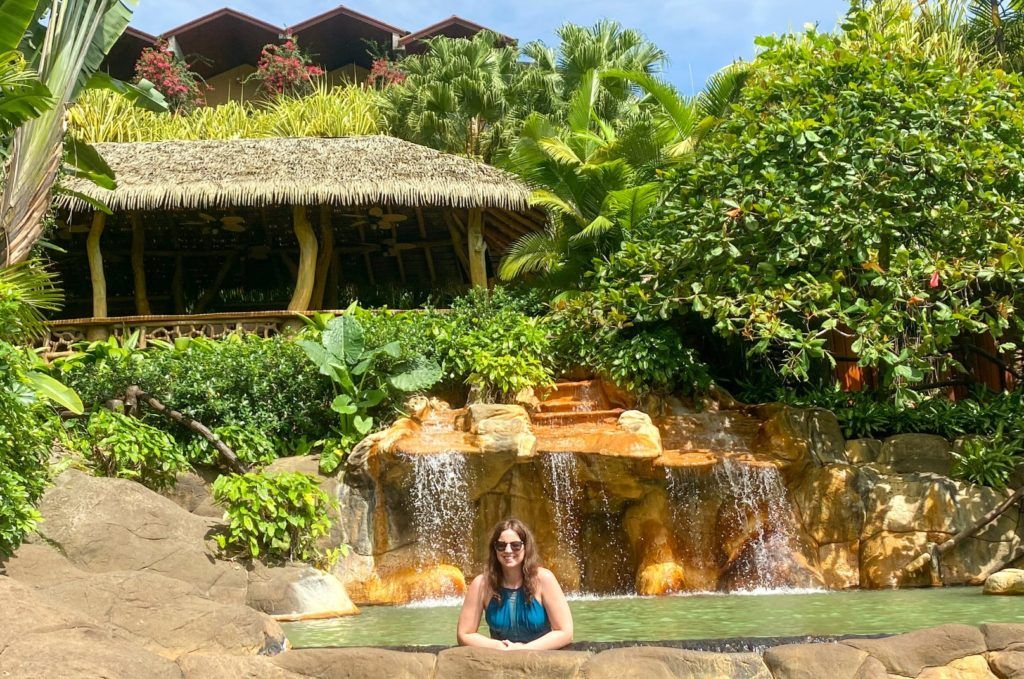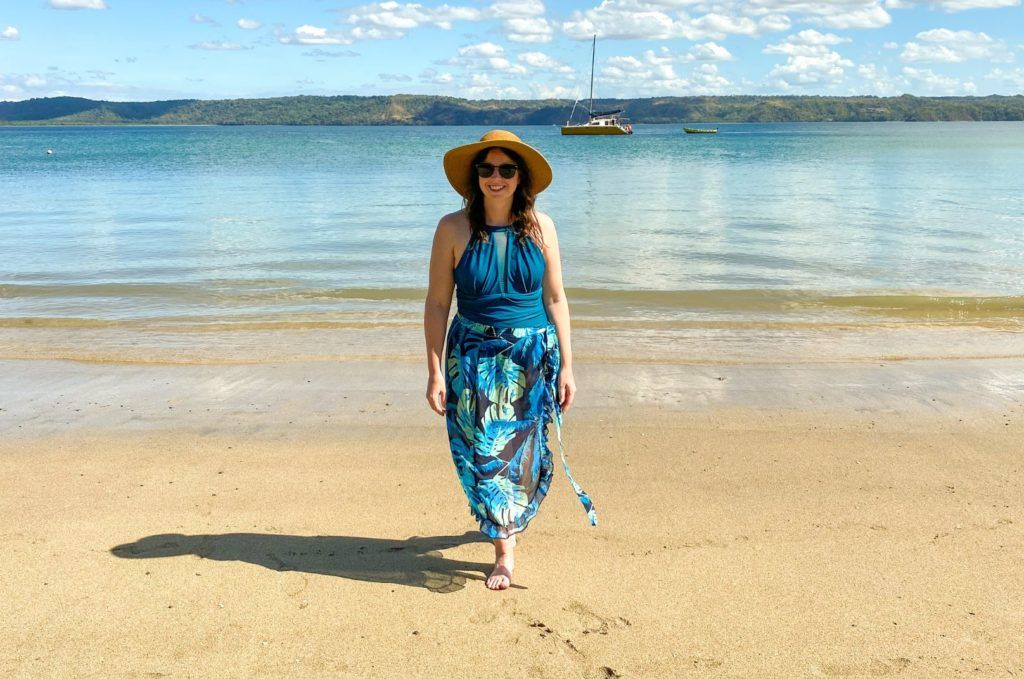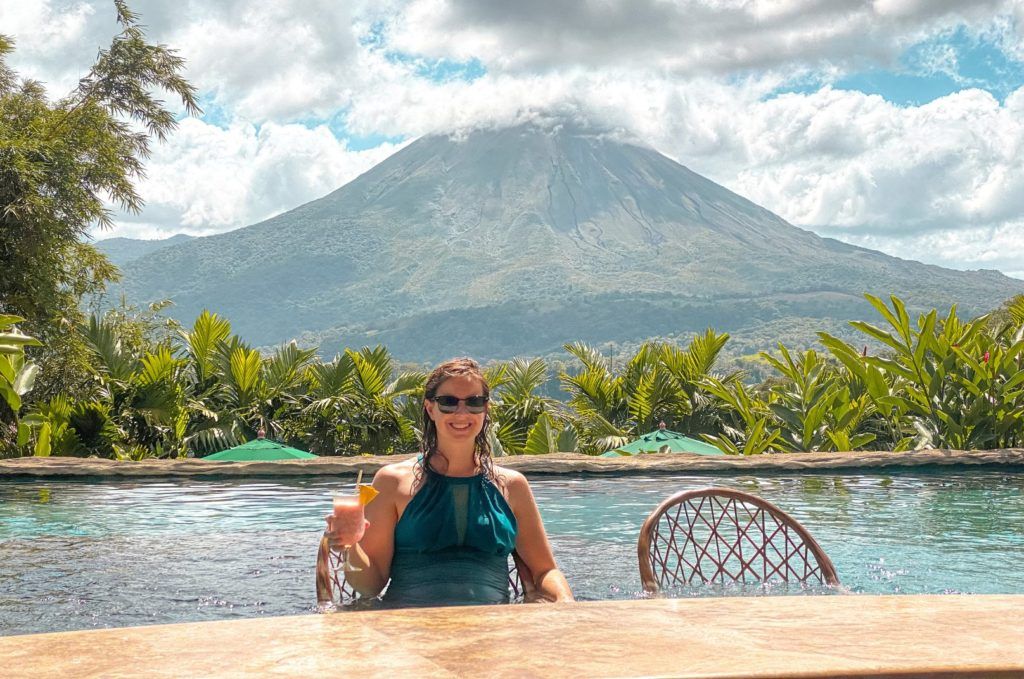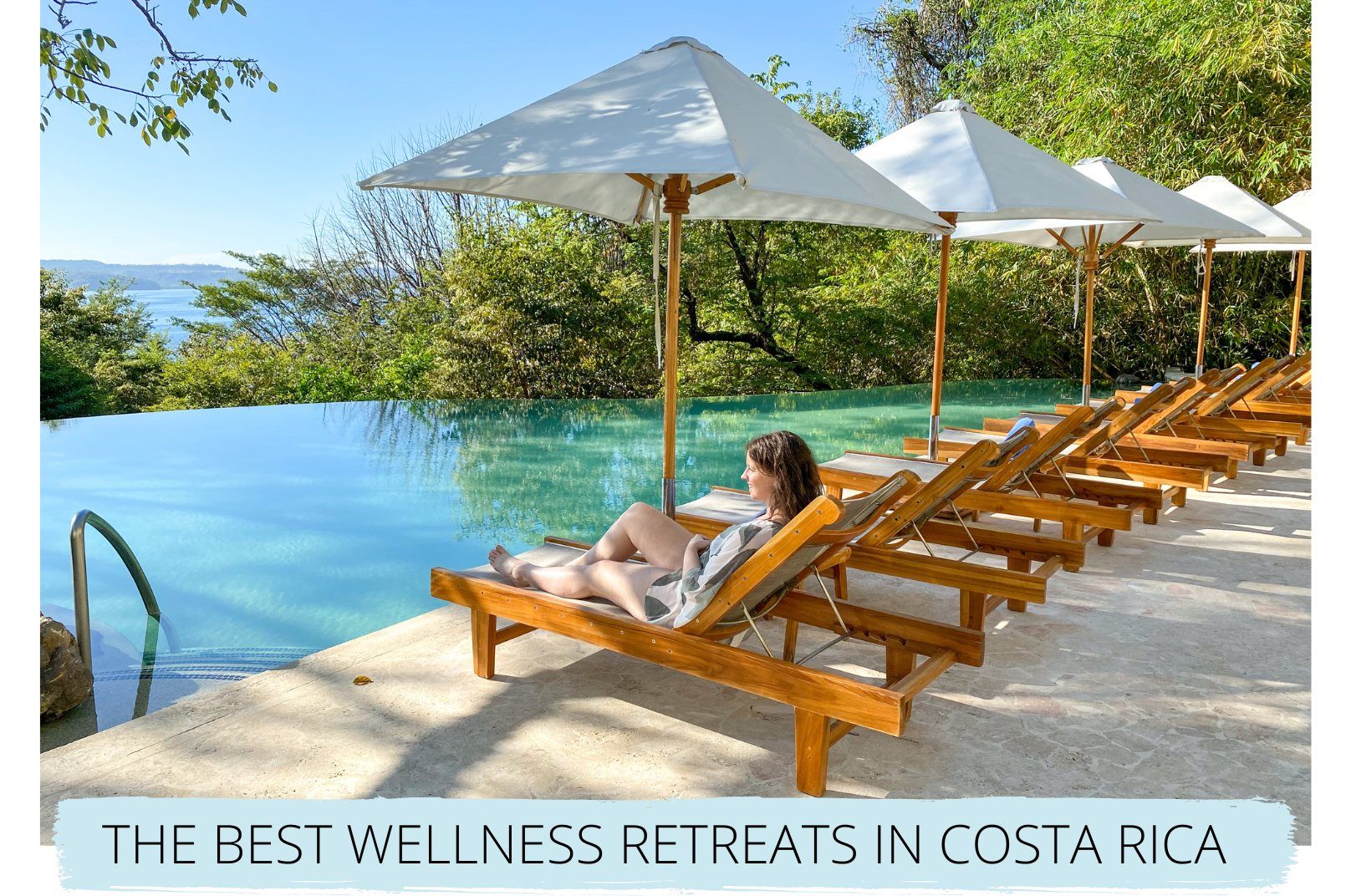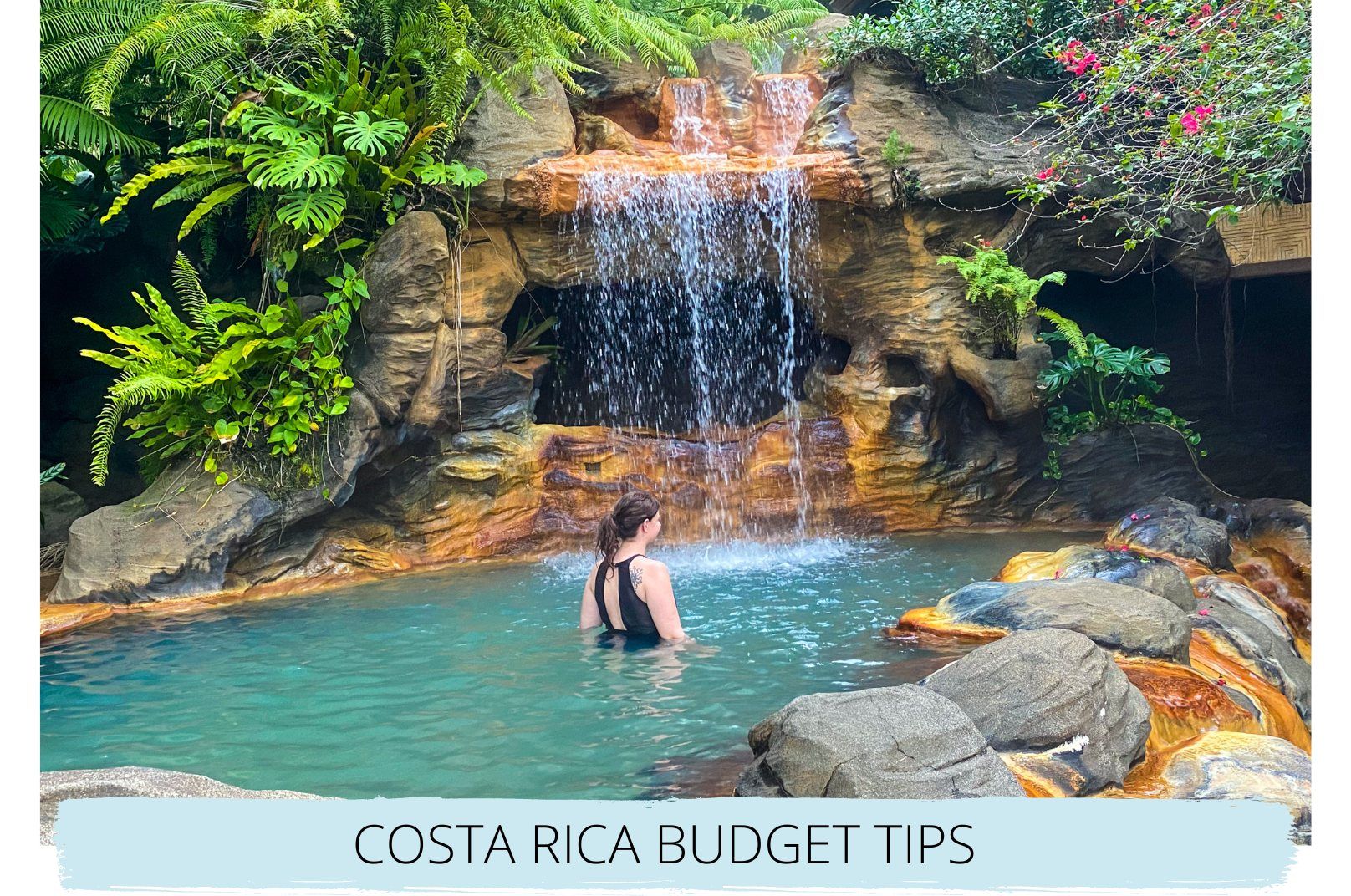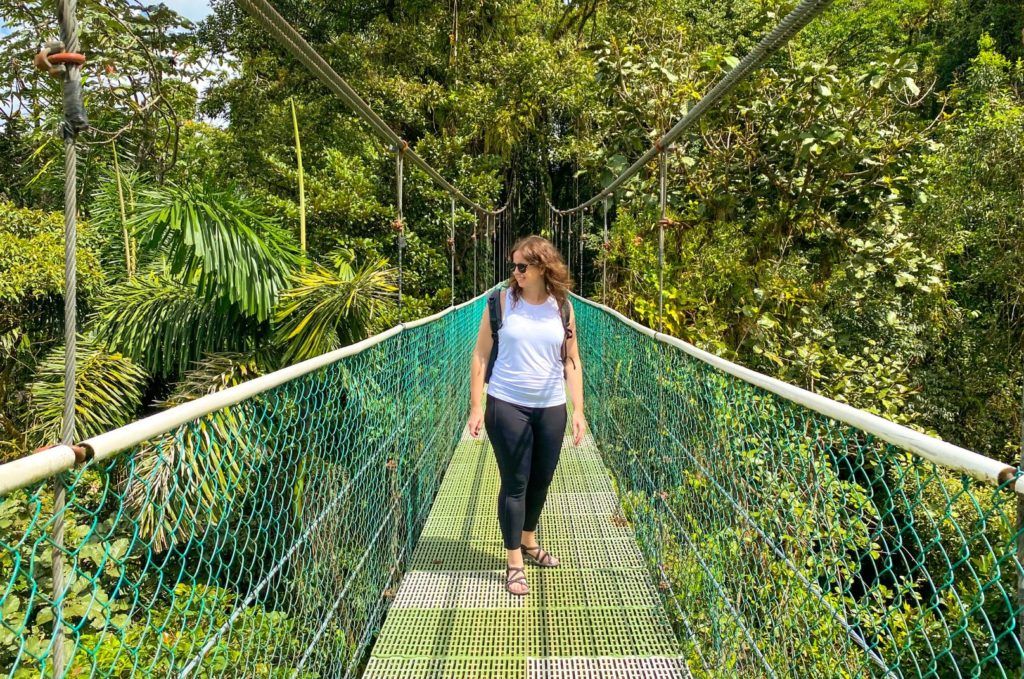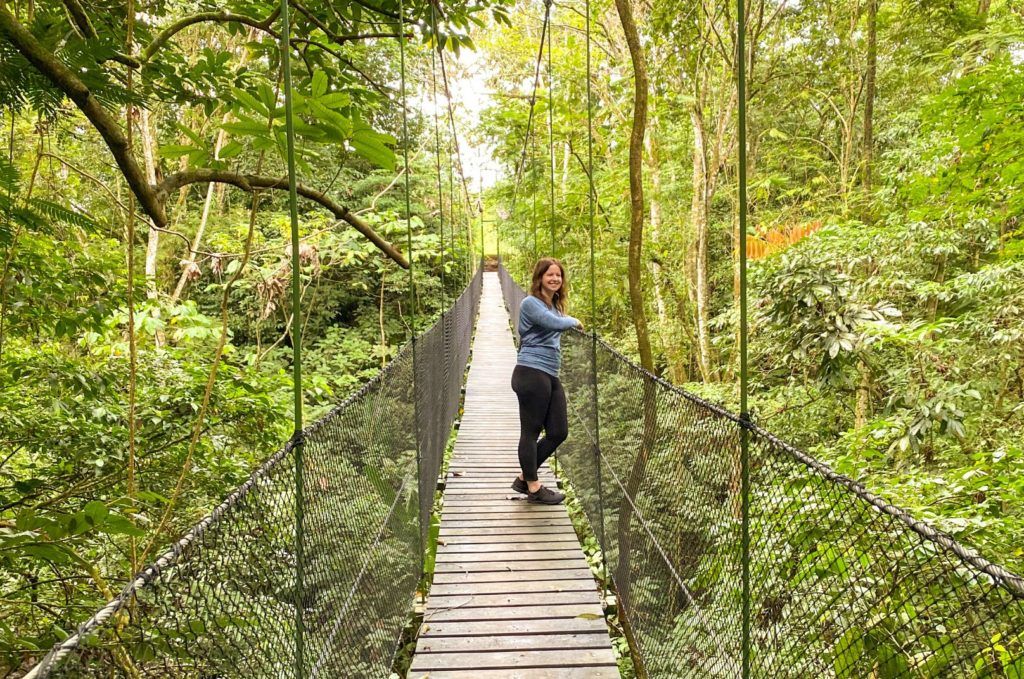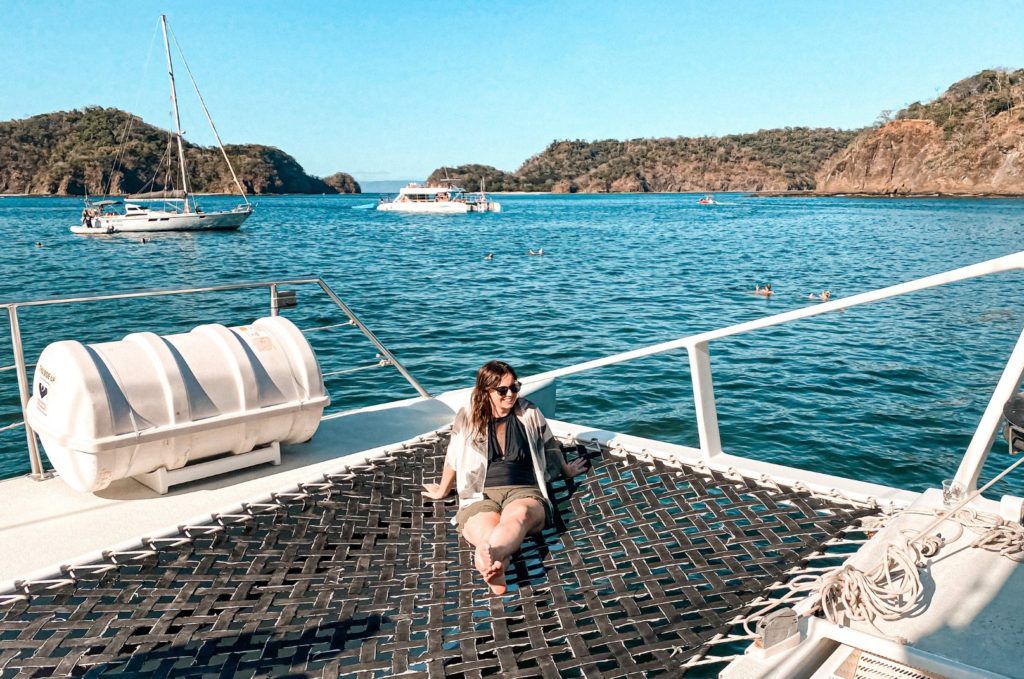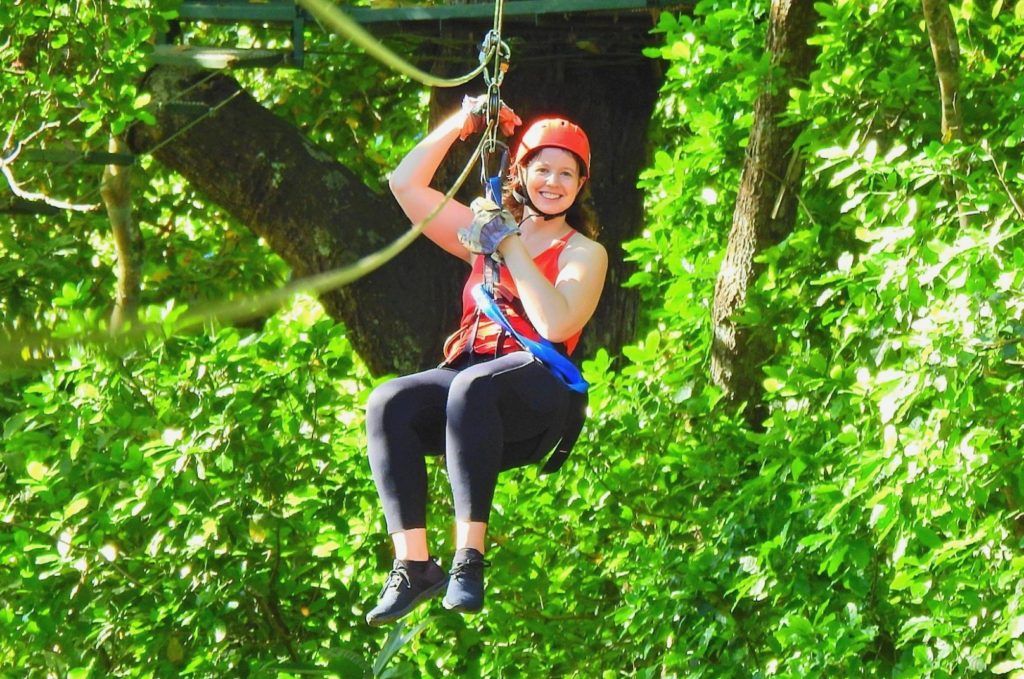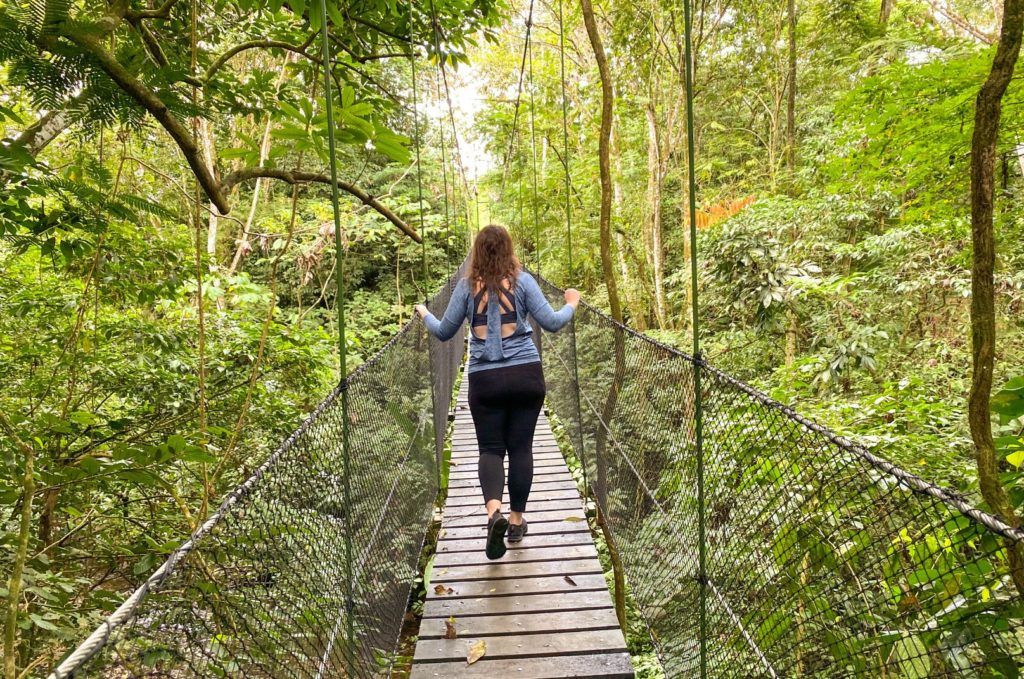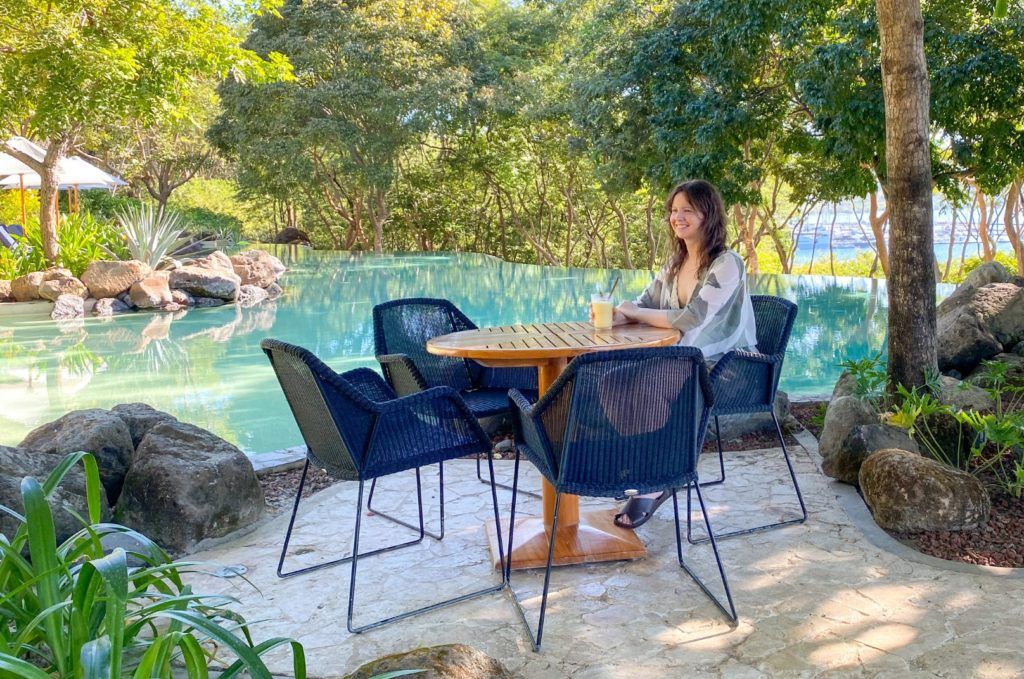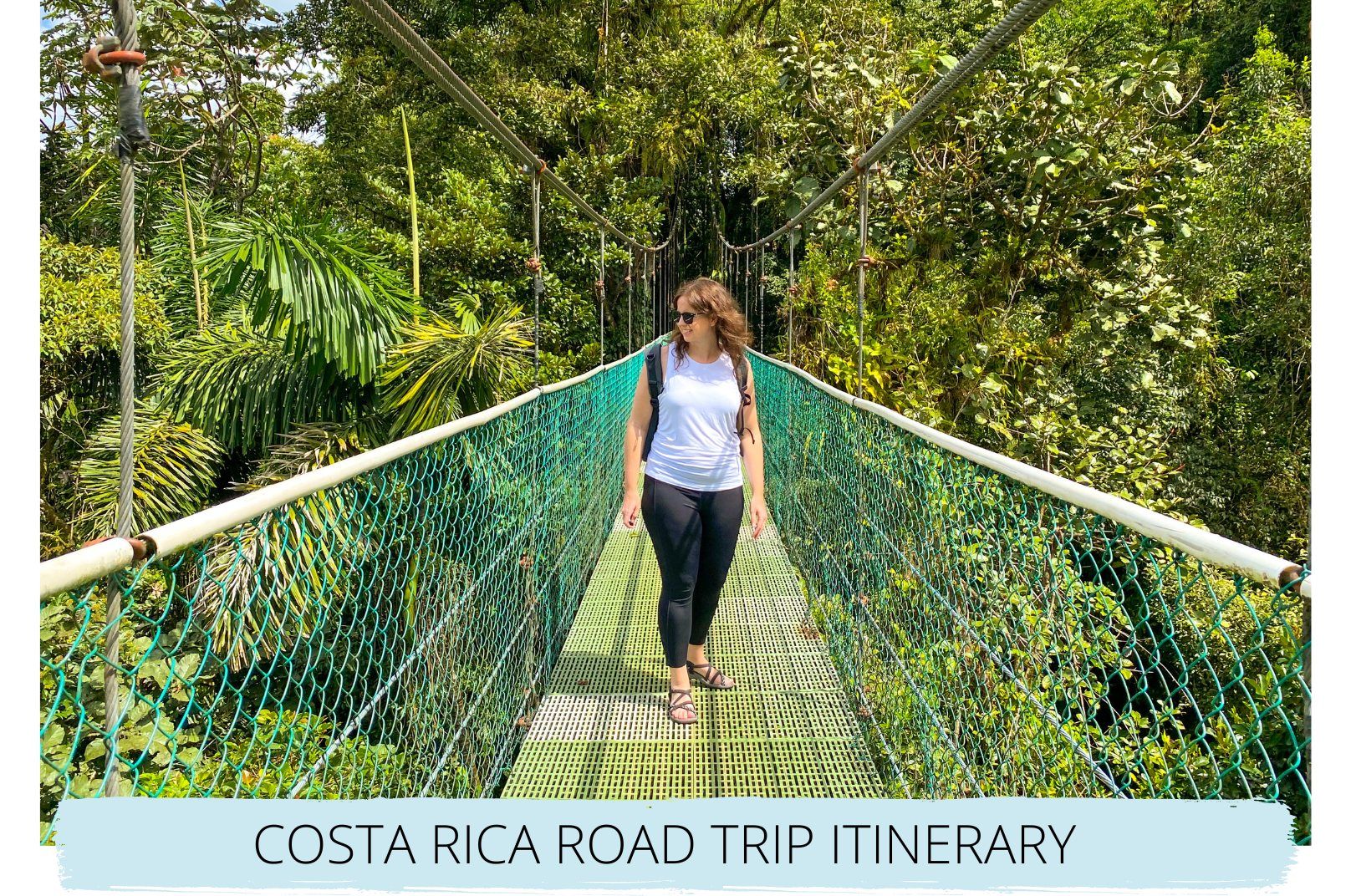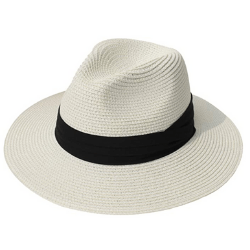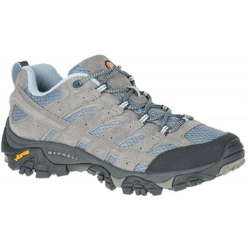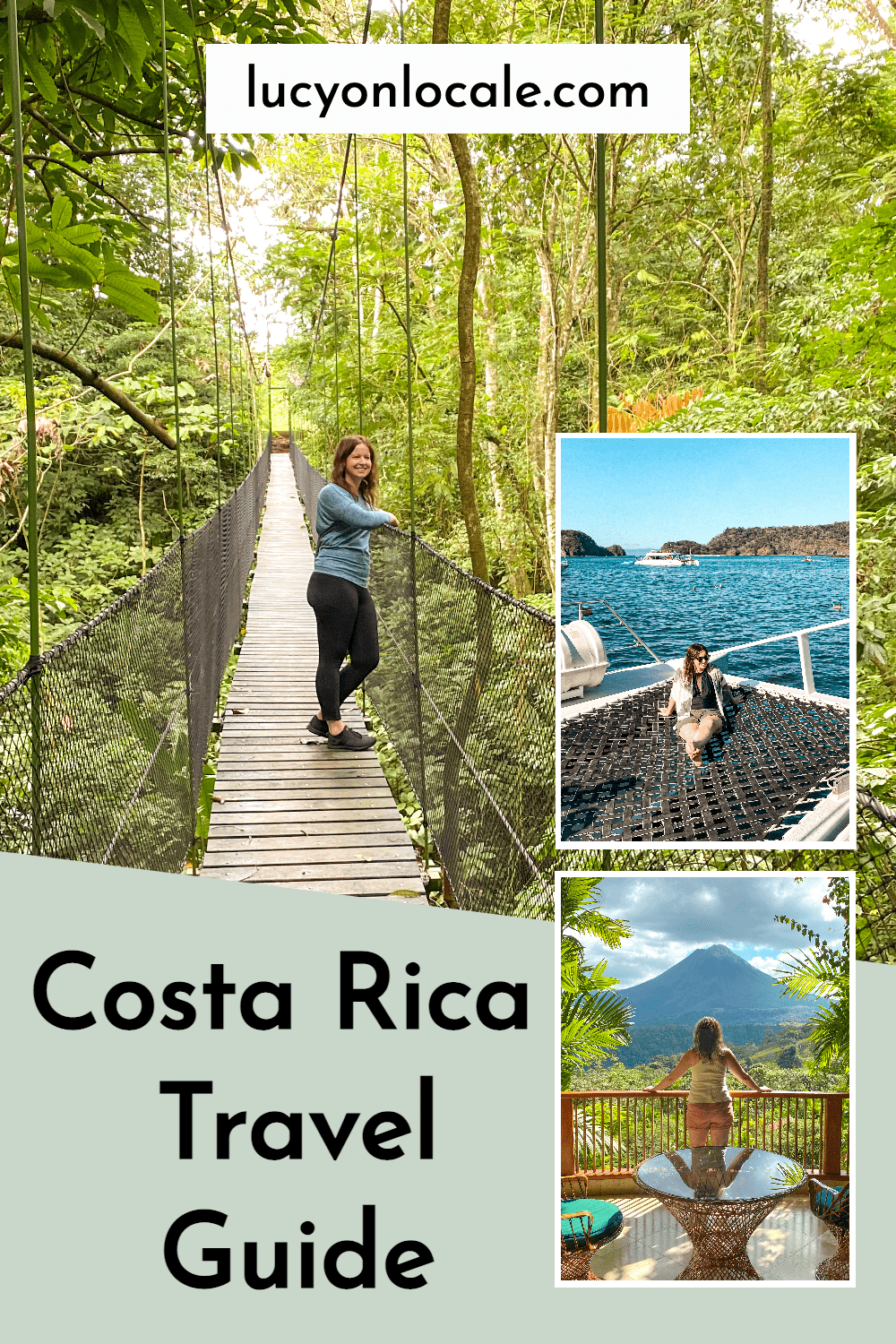Costa Rica is home to volcanoes, lakes, two coastlines, quaint villages, national parks, the pura vida lifestyle, and (of course) sloths! This country has something for everyone, and my Costa Rica trip planner has everything you need to know before you go!
Costa Rica
Ready for an adventure? Here’s the ultimate Costa Rica trip planner!

Where To Stay

Typical Travel Costs
Exchange Rate
Costa Rica has its own currency, but the U.S. dollar is almost universally accepted throughout the country. So all costs in this guide are in U.S. Dollars.
When leaving Costa Rica, you’ll need to pay a $31 exit tax. If you’re flying, this cost should be included in your airline ticket. If you’re driving or taking a shuttle or bus over the border, you’ll need cash for the exit tax.
Accommodation
A hostel will be around $20 a night. A mid-range hotel can range from $150-300 a night, and more luxury accommodations will start at $500 a night and go up from there.
Vacation home prices average between $100-$150 a night.
Transportation
A public bus ride around town is only about $1, and bus routes between the coasts can be as little as $30. A taxi ride usually charges a flat $2 rate, then $1 per kilometer. Shared shuttles are around $60 per person, and private shuttles are about $150 per person. Renting a car will cost approximately $70 a day, plus you’ll need to pay for insurance, gas, and parking.
Uber is only available in San Jose, Quepos, Jaco, La Fortuna, Liberia, Playas del Coco, and Tamarindo, and Lyft doesn’t operate in Costa Rica.
Food
A meal at a soda (a local restaurant serving traditional cuisine) is relatively inexpensive, around $5. An à la carte meal in a local restaurant is usually $15-20, and a meal at a nice restaurant would start around $30 and go up from there.
You can drink tap water in Costa Rica, so you won’t have to buy water bottles. Ordering “house” water (tap water) can save you money at restaurants.
Other Expenses
I’d budget around $50 a day for entrance fees, tours, snacks, tips, and souvenirs.
ATMs and currency exchange outlets can be found at airports and in larger cities, but ATMs are few and far between in the rest of the country. Most restaurants and hotels take Visa or Mastercard credit cards, but you’ll always want to have some cash with you. If you’re coming from the U.S., I recommend just brining U.S. dollars with you.
Tipping
Restaurants: 10% of the bill. This should be automatically included in the check, so make sure you don’t tip twice (unless you want to leave an additional tip).
Hotel Staff: $2 per day.
Airport & Hotel Porters: $1 per bag.
Tour Guides: $5 per person.
Shuttle Drivers: $5 per hour of service.
Taxi Drivers: round up your fare.
Money Saving Tips
How to Prepare for Costa Rica
Vaccinations
No vaccinations are required to enter Costa Rica. However, it’s smart to be up-to-date on yellow fever, typhoid, tetanus, rabies, and measles-mumps-rubella (MMR) shots. A hepatitis vaccine is also a good idea. Although malaria medication is not required, it might be a smart choice if you’re visiting any rural areas. If you’re going to take malaria medication, you need to begin taking it a few weeks before traveling to Costa Rica.
The Centers for Disease Control and Prevention (CDC) has current information on vaccinations and diseases in Costa Rica, and I recommend visiting their website for the most up-to-date travel requirements.
Visas
Citizens of the EU, U.S., Canada, Australia, and Great Britain need a valid passport and a return ticket. You won’t need a visa if you’re visiting for less than 90 days. If you’re a citizen of another country, you’ll need to check your country’s requirements for visiting Costa Rica. The World Travel Guide has more information on Costa Rica’s visa and passport requirements.
iVisa is an incredibly helpful resource for obtaining visas. iVisa makes the usually complicated and confusing process of getting a visa easy by taking care of everything for you. You fill out a simple online application, and then iVisa takes care of everything else.
Etiquette
Politeness is highly valued and expected in Costa Rica. Always greet people with a smile, nod, or verbal greeting when you walk into a restaurant, hotel lobby, or shop.
Things and locals running late are not uncommon and are usually not considered rude in Costa Rica. You should always strive to be on time, but don’t be outwardly frustrated if locals are not. This usually isn’t an issue for tour guides and transportation, though.
Businesses will not necessarily be open during their posted business hours, and restaurants or shops might close without notice. So I recommend calling ahead to keep from being disappointed and frustrated.
Costa Rica Itineraries & Tips
When To Go
December-April is Costa Rica’s dry season. This is when the weather is at its best, so it’s also when tourist numbers and prices peak. The coasts will be warm and sunny, with daytime highs in the 80 and 90s. The rainforest interior will be slightly cooler but more humid. There’s always a chance of rain in the rainforest (even in the dry season), so always have a rain jacket with you.
The shoulder season in Costa Rica is May-August. These months are HOT and HUMID, but the weather should still be mostly dry and sunny on both coasts. In the rainforest, afternoon showers are common but don’t usually last long. Tourist prices and numbers are slightly less than in the peak months, with May and August being your best bets for saving the most money.
The rainy season in Costa Rica from September to November usually has daily afternoon downpours, a high risk of landslides, muddy hiking conditions, and flooding on roads. But if you’re willing to risk the weather, you can score great accommodation and tour rates during these months. The Caribbean side (which is already the more budget-friendly coast) is usually much drier than the rest of the country, so it’s a great choice in the off-season.
WHAT TO PACK
Costa Rica is a tropical country with a generally pleasant climate. But temperatures vary depending on elevation. And you’ll always want a rain jacket with you.
The coastal areas tend to be warmer throughout the year, while the mountainous interior can get cool at night and in the early mornings, even during the summer months.
So, if you’re visiting during the rainy season, bring warm clothes and layers everywhere you go, even to the coasts. If you’re visiting during the dry season or summer, still bring a couple of layers for the evenings and mornings in the higher elevations.
If you’re doing any treks or hikes in either season, make sure you have any specialized clothing or equipment you might need.
Electrical outlets in Costa Rica are Types A and F. So, if you’re from the U.S., you won’t need an outlet adaptor. But British, European, and other travelers will need an adaptor.
I applied bug spray every day and still got some bites, so I recommend always having a can with you.
What To Wear
Choose comfortable, casual, and quick-drying clothes when packing for Costa Rica. On the coats, you’ll want shorts, tank tops, swimsuits, and cover-ups. In the rainforest, you’ll want shorts, leggings, swimwear, and t-shirts.
No matter what time of year you visit, bring your most comfortable shoes! You’ll want sturdy closed-toe shoes for activities like hikes and ziplining and water shoes that fully attach to your feet for tubing, rafting, boating, chasing waterfalls, and wading in hot springs.
Have you been here? If so, comment below with anything you’d add to this Costa Rica trip planner!

Shop My Costa Rica Essentials

Frequently Asked Questions
What is the average cost of a trip to Costa Rica?
This depends on when you visit and what type of accommodation you stay in.
A hostel will be around $20 a night. A mid-range hotel can range from $150-300 a night, and more luxury accommodations will start at $500 a night and go up from there. Vacation home prices average between $100-$150 a night.
A public bus ride around town is only about $1, and bus routes between the coasts can be as little as $30. A taxi ride usually charges a flat $2 rate, then $1 per kilometer. Shared shuttles are around $60 per person, and private shuttles are about $150 per person. Renting a car will cost approximately $70 a day, plus you’ll need to pay for insurance, gas, and parking.
A meal at a soda (a local restaurant serving traditional cuisine) is relatively inexpensive, around $5. An à la carte meal in a local restaurant is usually $15-20, and a meal at a nice restaurant would start around $30 and go up from there.
You can drink tap water in Costa Rica, so you won’t have to buy water bottles. Ordering “house” water (tap water) can save you money at restaurants.
I’d budget around $50 a day for entrance fees, tours, snacks, tips, and souvenirs.
What is the best month to go to Costa Rica?
December-April is Costa Rica’s dry season. This is when the weather is at its best, so it’s also when tourist numbers and prices peak. The coasts will be warm and sunny, with daytime highs in the 80 and 90s. The rainforest interior will be slightly cooler but more humid. There’s always a chance of rain in the rainforest (even in the dry season), so always have a rain jacket with you.
The shoulder season in Costa Rica is May-August. These months are HOT and HUMID, but the weather should still be mostly dry and sunny on both coasts. In the rainforest, afternoon showers are common but don’t usually last long. Tourist prices and numbers are slightly less than in the peak months, with May and August being your best bets for saving the most money.
The rainy season in Costa Rica from September to November usually has daily afternoon downpours, a high risk of landslides, muddy hiking conditions, and flooding on roads. But if you’re willing to risk the weather, you can score great accommodation and tour rates during these months. The Caribbean side (which is already the more budget-friendly coast) is usually much drier than the rest of the country, so it’s a great choice in the off-season.
How many days do you need for Costa Rica?
I recommend spending at least a week in Costa Rica. This will give you enough time to spend three nights on one of the coasts and four nights in the rainforest interior.
Costa Rica is a tropical country with a generally pleasant climate. But temperatures vary depending on elevation. And you’ll always want a rain jacket with you.
The coastal areas tend to be warmer throughout the year, while the mountainous interior can get cool at night and in the early mornings, even during the summer months.
So, if you’re visiting during the rainy season, bring warm clothes and layers everywhere you go, even to the coasts. If you’re visiting during the dry season or summer, still bring a couple of layers for the evenings and mornings in the higher elevations.
If you’re doing any treks or hikes in either season, make sure you have any specialized clothing or equipment you might need.
Electrical outlets in Costa Rica are Types A and F. So, if you’re from the U.S., you won’t need an outlet adaptor. But British, European, and other travelers will need an adaptor.
I applied bug spray every day and still got some bites, so I recommend always having a can with you.
How do I plan my first trip to Costa Rica?
How To Plan a Trip To Costa Rica:
1. Decide when you’re going
2. Decide where you’re going to go and for how many nights.
3. Book your flights.
4. Book your accommodation.
5. Book your tours and ground transportation.
What is the cheapest month to go to Costa Rica?
September – November.
The rainy season in Costa Rica from September to November usually has daily afternoon downpours, a high risk of landslides, muddy hiking conditions, and flooding on roads. But if you’re willing to risk the weather, you can score great accommodation and tour rates during these months. The Caribbean side (which is already the more budget-friendly coast) is usually much drier than the rest of the country, so it’s a great choice in the off-season.
December-April is Costa Rica’s dry season. This is when the weather is at its best, so it’s also when tourist numbers and prices peak. The coasts will be warm and sunny, with daytime highs in the 80 and 90s. The rainforest interior will be slightly cooler but more humid. There’s always a chance of rain in the rainforest (even in the dry season), so always have a rain jacket with you.
The shoulder season in Costa Rica is May-August. These months are HOT and HUMID, but the weather should still be mostly dry and sunny on both coasts. In the rainforest, afternoon showers are common but don’t usually last long. Tourist prices and numbers are slightly less than in the peak months, with May and August being your best bets for saving the most money.
How much money do you need for 7 days in Costa Rica?
I recommend spending at least a week in Costa Rica. This will give you enough time to spend three nights on one of the coasts and four nights in the rainforest interior.
Costa Rica is a tropical country with a generally pleasant climate. But temperatures vary depending on elevation. And you’ll always want a rain jacket with you.
The coastal areas tend to be warmer throughout the year, while the mountainous interior can get cool at night and in the early mornings, even during the summer months.
So, if you’re visiting during the rainy season, bring warm clothes and layers everywhere you go, even to the coasts. If you’re visiting during the dry season or summer, still bring a couple of layers for the evenings and mornings in the higher elevations.
If you’re doing any treks or hikes in either season, make sure you have any specialized clothing or equipment you might need.
Electrical outlets in Costa Rica are Types A and F. So, if you’re from the U.S., you won’t need an outlet adaptor. But British, European, and other travelers will need an adaptor.
I applied bug spray every day and still got some bites, so I recommend always having a can with you.
Does the US dollar go far in Costa Rica?
Costa Rica has its own currency, but the U.S. dollar is almost universally accepted throughout the country. So, relatively speaking, the U.S. dollar doesn’t go as far in Costa Rica as it does in the rest of Central America.
How much US cash should I bring to Costa Rica?
Costa Rica has its own currency, but the U.S. dollar is almost universally accepted throughout the country. ATMs and currency exchange outlets can be found at airports and in larger cities, but ATMs are few and far between in the rest of the country. Most restaurants and hotels take Visa or Mastercard credit cards, but you’ll always want to have some cash with you.
If you’re traveling from the U.S., I recommend bringing enough cash with you to cover your tips, plus some extra for souvenirs.

This Costa Rica trip planner is not a sponsored post, and, as always, the thoughts and opinions expressed in this Costa Rica trip planner are entirely my own. Some of the links in this Costa Rica trip planner are affiliate links, and, at no cost to you, I may earn a small commission from this Costa Rica trip planner.
January 28, 2023
 Travel Shop
Travel Shop Merch
Merch Travel Tips
Travel Tips
 Photography
Photography Points & Miles
Points & Miles Credit Cards
Credit Cards